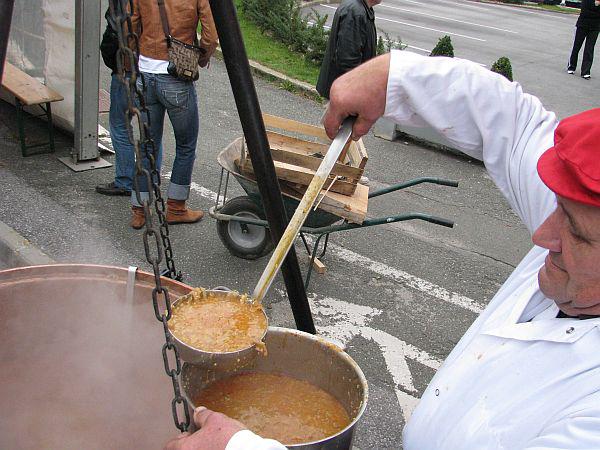The wintertime pig slaughter known as "koline" is an important tradition across Slovenia. The annual festival has given rise to several unique dishes, one of the most distinctive of which is "bujta repa", a centuries-old recipe thqt originates in the northeastern region of Prekmurje, and is now gaining recognition as a traditional specialty throughout the country.
The basis of "bujta repa" comes from parts of the pig that otherwise go to waste: the head, the skin, and the bones, all of which are cooked for approximately 30 minutes (The term "bujta" comes from the verb meaning "to kill.") Then comes the other chief ingredient, turnips ("repa" in Slovenian), followed by groats, as well as a touch of onions, garlic, bay leaves, and plenty of lard.
The resulting rich stew is often enjoyed for days with sausages, pork roasts, and other products that accompany the pig slaughter – or as a standalone dish. It is said that "bujta repa" is best when it is left to cool and then reheated at least once.
Over the decades, "bujta repa" has become a symbol of local pride. At an annual festival that celebrated dish, cooks from around the region and beyond gather in a competition to make the best "bujta repa" anywhere. And University of Ljubljana students from Prekmurje regularly organize Bujta Repa parties, which have the reputation for being some of the wildest festivities in the capital.
For a long time, "bujta repa" was eaten only at home. But with the recent turn towards home-style cooking and the rediscovery of traditional Slovenian recipes, "bujta repa" has begun to appear on restaurant menus across Slovenia.
A dish that has its origin in difficult times, when meat was a rare delicacy and when every part of a slaughtered pig had some use, is now a popular dish across Slovenia – and is even being discovered by a growing number of visitors to the country.


































































